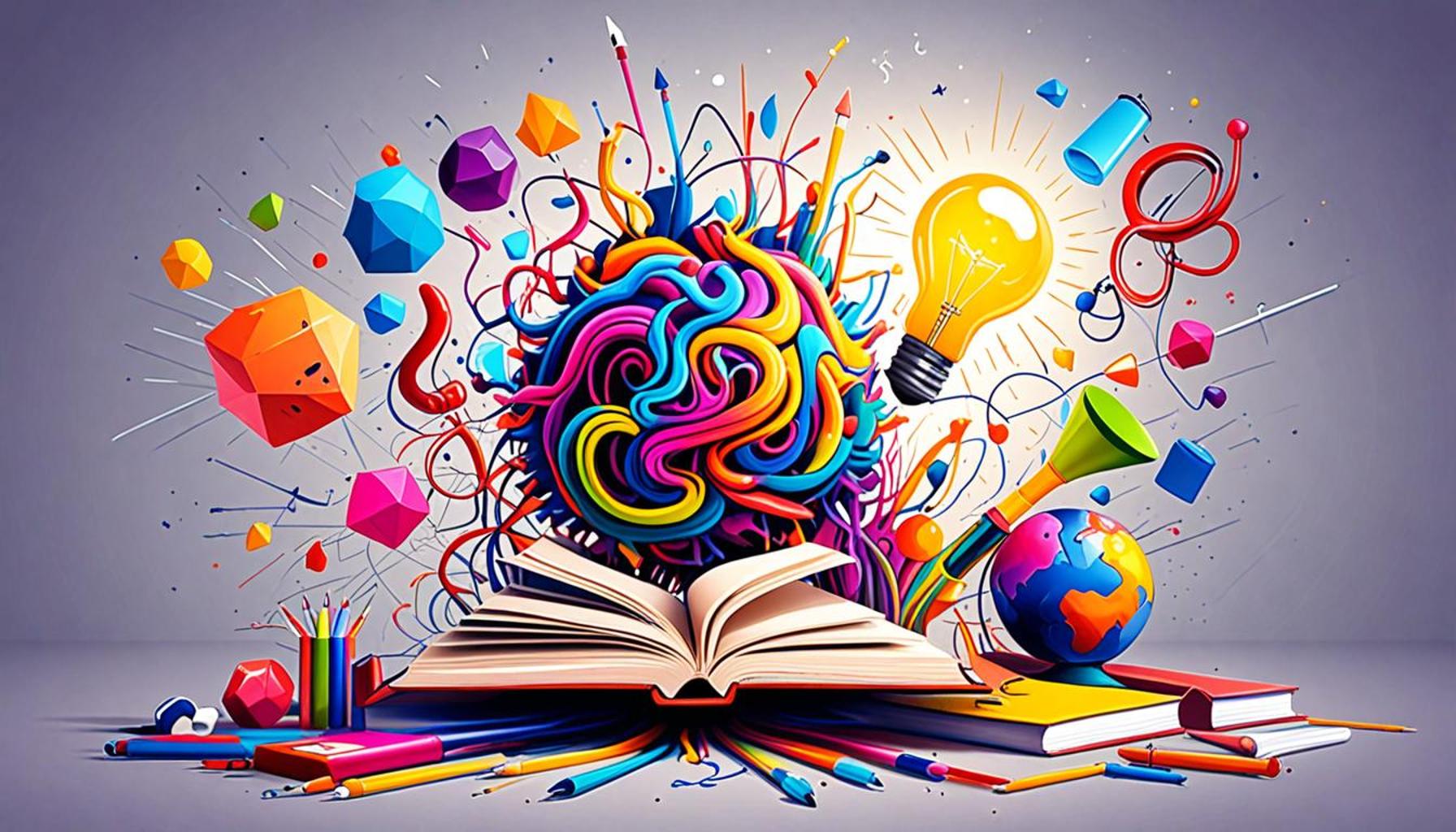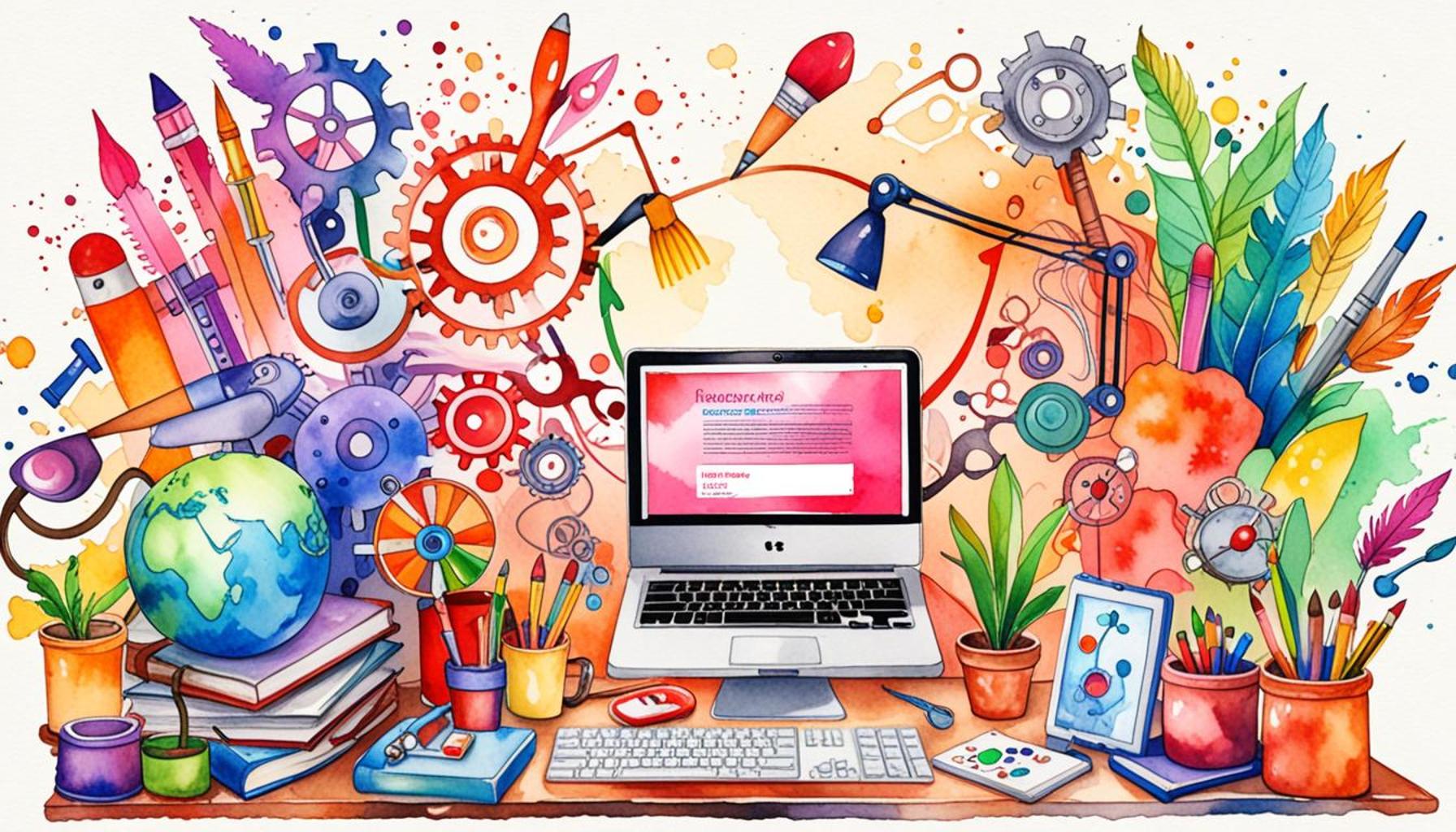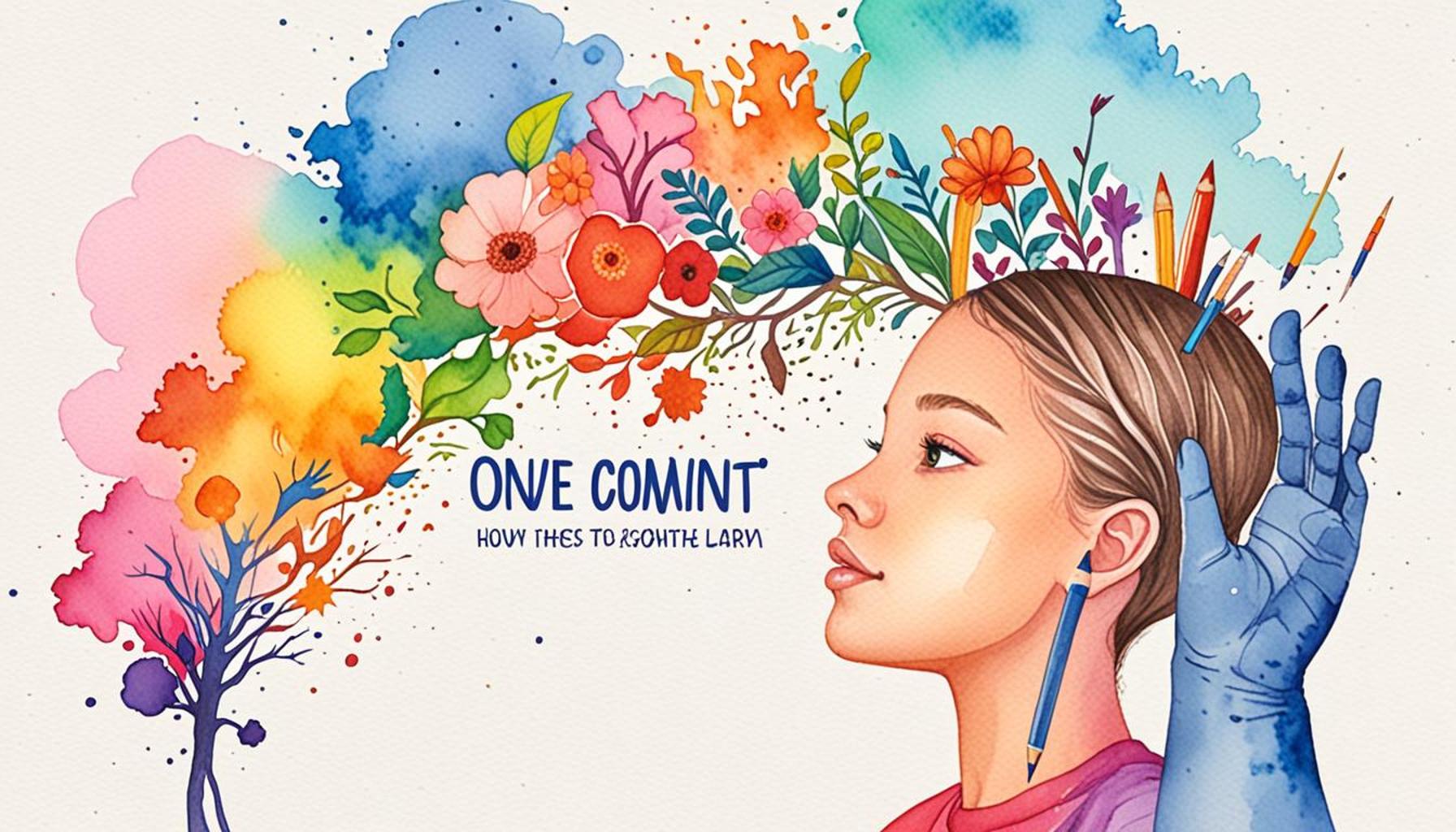How Continuous Learning Can Stimulate Innovation and Creativity in Professional Environments

The Importance of Embracing Lifelong Learning
In today’s fast-paced professional landscape, embracing continuous learning is more crucial than ever. Organizations that prioritize ongoing education not only empower their employees but also foster an environment ripe for innovation and creativity. The significance of continuous learning cannot be overstated, especially in an era marked by rapid technological advancement and shifting market dynamics.
One of the most profound benefits of continuous learning is the enhanced problem-solving skills it cultivates within individuals. When employees engage in training workshops, online courses, or even informal peer learning sessions, they develop a diverse toolkit to tackle complex challenges. For instance, a software developer learning about agile methodologies can significantly improve their ability to respond to client needs promptly and efficiently.
Furthermore, the fast-evolving nature of industries underscores the necessity for adaptability. The ability to adapt to industry changes ensures that employees remain relevant and competitive. A clear example is seen in Nigeria’s burgeoning tech scene, where local startups are not just reacting to global trends but are also influencing them. Companies like Andela and Paystack have harnessed the power of continuous learning to prepare their teams for fresh challenges, ensuring they stay ahead of the curve.
The fruits of continuous learning also manifest in increased employee engagement and satisfaction. Employees who feel invested in their professional growth are more likely to remain committed to their organization. A study by Gallup revealed that workplaces prioritizing ongoing education experience up to 30% higher employee retention rates. This not only benefits the organizations by retaining talent but also contributes to a more motivated and enthusiastic workforce.
Moreover, continuous learning encourages the exchange of ideas. When professionals collaborate and share diverse perspectives, they are likely to generate innovative concepts that speak directly to the unique needs of the market. For example, teams in Nigeria have successfully developed solutions like mobile banking platforms tailored for underserved populations, thanks to their collective insights and shared learning experiences.
These collaborative efforts allow organizations to identify unique market needs that may otherwise go unnoticed. The emergence of local solutions like Jumia or Flutterwave exemplifies how understanding local dynamics through continuous learning can lead to significant business successes.
In fostering a culture of experimentation, organizations not only stimulate creativity but also create a safe space for employees to bring their ideas to life. Such environments can lead to revolutionary products and services that disrupt traditional markets. The innovations born out of continuous learning extend beyond just individual growth; they contribute to the long-term success and sustainability of entire organizations.
As we delve deeper into the significance of continuous learning, it becomes evident that its influence transcends individual growth and extends to entire organizations. By investing in continuous learning initiatives, companies can create an atmosphere where creativity flourishes and innovation thrives. This culture not only advantages the employees but also positions the organization as a leader in an increasingly competitive landscape.
CHECK OUT: Click here to explore more
Continuous Learning as a Catalyst for Innovation
Continuous learning is more than just an individual endeavor; it serves as the bedrock of an organization’s innovation strategy. In professional environments where innovation and creativity are valued, the role of ongoing education becomes increasingly vital. Organizations that facilitate access to learning opportunities are not merely fuelling personal growth but also igniting a culture that celebrates creativity and innovative thinking.
One of the key ways continuous learning fosters innovation is through the provision of diverse knowledge sources. When employees are encouraged to seek out new skills, attend workshops, or participate in online courses, they expose themselves to a wider range of ideas and methodologies. This exposure is crucial in generating creative solutions to everyday problems. For instance, a finance professional who learns about data analytics tools can uncover valuable insights, thereby contributing to more informed decision-making processes and innovative product offerings.
Moreover, continuous learning promotes an organizational ethos of experimentation and risk-taking. In cultures where employees are encouraged to explore new ideas without fear of failure, innovation flourishes. Research indicates that organizations embracing this approach often see significant performance improvements. According to a report by the World Economic Forum, companies that invest in employee learning and development are 30% more likely to report significant innovation outcomes. By creating a safe and supportive learning environment, businesses in Nigeria can inspire their teams to experiment and push boundaries, resulting in the inception of groundbreaking products or services.
The Role of Collaborative Learning
Collaboration is another pivotal element of continuous learning that enhances innovation. When teams engage in collaborative learning, they tap into a wealth of shared knowledge and diverse perspectives. This interaction can lead to the cross-pollination of ideas, which is vital for creative innovation. Here are a few ways collaborative learning contributes to innovation:
- Diverse Perspectives: Team members from various backgrounds and expertise can challenge conventional thinking, leading to unique solutions.
- Skill Enhancement: Employees can learn from one another, sharpening their skills and expanding their capabilities through shared experiences.
- Improved Communication: A culture of shared learning fosters open lines of communication, ensuring that all voices are heard and valued in the brainstorming process.
In Nigeria, collaborative learning is exemplified by entrepreneurial hubs and co-working spaces that bring together professionals from varied fields. Initiatives like these not only enhance individual capabilities but also drive the creation of innovative projects tailored to local needs. For example, startups often leverage the combined expertise of different disciplines to solve pressing socio-economic issues, demonstrating the powerful synergy that arises from collaborative efforts.
Ultimately, fostering a commitment to continuous learning is a strategic investment that can yield significant returns in terms of innovation and creativity. By nurturing an environment where employees are encouraged to learn and grow together, organizations can unlock the full potential of their workforce, creating solutions that are not only innovative but also relevant and impactful in the broader marketplace.
Exploring the Dynamics of Continuous Learning
Continuous learning is a powerful catalyst for innovation and creativity within professional environments. By fostering an atmosphere that prioritizes ongoing education, organizations can unlock their teams’ potential and generate groundbreaking ideas. One of the key elements in this dynamic is the establishment of a culture that encourages curiosity and experimentation.Encouraging Risk-taking: In a learning-centric environment, employees feel empowered to take calculated risks. When individuals know that their organization supports growth through learning, they are more likely to explore uncharted territories, leading to innovative solutions. For example, companies like Google and Amazon have embedded learning into their corporate DNA, yielding creative products and services that often disrupt entire industries.Leveraging Diverse Perspectives: Continuous learning also opens the door to diverse perspectives. When team members engage in training sessions, workshops, or collaborative projects, they bring a wealth of knowledge and experience, resulting in unique insights that fuel creativity. This melting pot of ideas can spark initiatives that may never have emerged in a more homogeneous workplace.
Incorporating Feedback and Adaptation
Feedback plays a crucial role in continuous learning. In environments where feedback is prevalent, employees are encouraged to refine their skills and approaches. This iterative process allows for continual improvement, which is vital for maintaining a competitive edge. The adaptability gained through continuous learning provides teams with the flexibility needed to pivot and adjust strategies in response to market demands. In fast-paced industries, this adaptability translates to rapid innovation cycles and the ability to capitalize on new opportunities efficiently.
Conclusion
By integrating continuous learning into the fabric of daily operations, organizations can instigate a cycle of innovation and creativity, positioning themselves as leaders in their respective fields and inspiring a new generation of thinkers and doers.
| Advantages of Continuous Learning | Impact on Innovation and Creativity |
|---|---|
| Enhanced Problem-Solving Skills | Encourages out-of-the-box thinking, leading to innovative solutions. |
| Increased Employee Engagement | Motivated employees bring fresh ideas that enhance creativity. |
ADDITIONAL INSIGHTS: Expand your understanding here
Integrating Technology for Enhanced Learning Experiences
In today’s fast-paced world, the integration of technology into continuous learning frameworks has become indispensable. Organizations that embrace digital learning tools are positioned not only to enhance employee engagement but also to stimulate innovation through creative education pathways. Digital platforms offer access to a plethora of resources, including webinars, online courses, and interactive modules that cater to various learning styles.
The rise of e-learning has opened new doors for professionals in Nigeria, particularly given the increasing penetration of mobile technology. For example, platforms like Coursera and Udemy allow employees to pursue relevant courses from the world’s top universities or industry leaders at their own pace, promoting self-directed learning that can lead to novel insights. Such accessible resources encourage professionals to stay up to date with industry trends and technological advancements, creating a workforce that is not only knowledgeable but also equipped to innovate.
Creating an Adaptive Learning Environment
Furthermore, fostering an adaptive learning environment is crucial for maximizing the impact of continuous education on innovation. Businesses in Nigeria can achieve this by utilizing data analytics to understand the learning preferences and performance of their employees. By tailoring educational programs to meet individual needs, organizations can ensure that learning is both relevant and effective, facilitating the development of skills that can drive creativity.
For instance, a Nigerian manufacturing firm could implement a continuous learning program tailored to distinct job roles—ranging from production staff to management—achieving outcomes that align closely with their strategic goals. By adopting personalized learning paths, the organization allows employees to explore areas that ignite their passion, enhancing their engagement and, subsequently, fostering an innovative mindset.
The Impact of Leadership on Continuous Learning
Leadership plays a critical role in embedding a culture of continuous learning and innovation. When leaders actively participate in learning initiatives, it sends a strong message to employees about the value placed on education and skill development. For example, leaders who share their learning journeys and successes, or openly engage in knowledge-sharing sessions, inspire their teams to do the same.
In Nigeria, organizations led by executives who champion learning often witness a ripple effect throughout their workplaces. By adopting mentorship programs where leaders guide their team members through learning processes, businesses cultivate an atmosphere that celebrates innovation. Such initiatives not only support knowledge transfer but also help bridge the gap between experience and fresh ideas, leading to breakthrough innovations.
Leveraging Local Networks for Knowledge Exchange
To further enrich learning experiences, organizations can leverage local networks and communities. Collaboration with educational institutions and industry associations can create platforms for knowledge exchange and networking, sparking collaborative innovation. For instance, tech meetups and innovation hubs throughout Nigeria foster environments where professionals can share insights, discuss emerging trends, and co-create solutions.
These local networks serve as incubators for new ideas, enabling organizations to tap into the collective intelligence of their communities. By encouraging employees to engage with these networks as part of their continuous learning, businesses can drive innovation that responds directly to local needs and conditions, thereby strengthening their market position.
In summary, a multifaceted approach to continuous learning—emphasizing technology, adaptive strategies, empowered leadership, and local networking—can significantly stimulate innovation and creativity within professional environments. By investing in these areas, Nigerian organizations can not only enhance employee capabilities but also create a dynamic culture that thrives on inventive thinking and continuous improvement.
RECOMMENDED: Check out this similar article
Conclusion: Unlocking Potential Through Continuous Learning
In the rapidly evolving professional landscape, the role of continuous learning as a catalyst for innovation and creativity cannot be overstated. As organizations in Nigeria embrace new technologies and learning methodologies, they create an environment where employees are encouraged to thrive, explore novel ideas, and push the boundaries of their capabilities. By integrating digital tools, cultivating adaptive learning strategies, and fostering a strong leadership presence, companies can fundamentally reshape their business cultures into hubs of inventive thought.
The emphasis on personalized learning experiences ensures that employees are not just passive recipients of information but active participants in their own growth. This engagement boosts motivation and creativity, facilitating the development of solutions tailored to local markets and challenges. Moreover, by connecting with local networks and communities, organizations tap into rich reservoirs of knowledge, driving collaborative innovation that is responsive and relevant.
Ultimately, continuous learning is not merely an organizational strategy; it is a fundamental ethos that can transform how professionals work and thrive together. As Nigerian businesses continue to cultivate a culture centered around lifelong education, they will unlock immense potential, empowering teams to innovate boldly and redefine the future of their industries. The journey towards a more innovative workplace begins with a commitment to learning—an investment that promises to yield remarkable returns.


